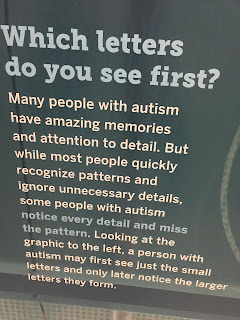For the past couple of weeks my yoga instructor has been away so I’ve been learning with another teacher. I’ve been with the same instructor for about a year and I’ve gotten used to her ways. Our fill-in instructor is actually the studio owner and a more experienced teacher, but I’m used to what I’m used to and I’m finding the change challenging.
The differences in how each teaches got me thinking about how learning and the relationship it is based on works.
 |
| My regular instructor pushes herself and her students. It works for me. |
I’m the furthest thing from a yoga expert but I enjoy the process and I’ve gotten better at it in a year of practice. My regular instructor is very focused on form and pushing through physical barriers. Her own practice is flawless. Our current instructor is much more mentally focused, asking us to be mindful of what we’re doing and de-emphasizing the physical side of things (though I still find her classes very physically strenuous). Neither is right, but they are very different in how they demonstrate their mastery and what they focus their students on. I’ve enjoyed the change but I’ve bonded with my regular instructor and I’m looking forward to getting her back.
The personal nature of the relationship between a master and apprentice is based on choices by both. Masters tend to select for apprentices who they can work with, and vice-versa. Back in the day when apprentices were unable to select their masters this wasn’t the case, but nowadays you see this self-selection all the time. When a student finds a teacher they share a wavelength with they tend to latch on. Variety is the key to this selection process. I probably wouldn’t have stuck it out (yoga is hard work) if I hadn’t connected to the instructor’s approach enough to overcome the difficult early months.
 |
| Another philosophical thought from my regular instructor. She wants you to develop quickly, find your limits and then push through them. In that struggle is found yoga. |
In my first year of university I asked my history TA how she knew what to focus on. She laughed and said it was all about the prof, why else would she be doing her Masters in Scottish history? That personal relationship is an important part of a student’s willingness to put up with the pain of learning a discipline.
In the education system you get the impression that this individualism is a bad thing. Teachers are encouraged to adopt whichever educational philosophy is in vogue and be ready to move on to the next one when the next book comes out. Most experienced teachers have learned to not get caught up in this kind of thinking (one of the key failures of professional development). It tends to be the game of educational leadership to push a school-wide vision of teaching in order to establish some kind of standard. Teacher assessment uses checklists and fill-in-the-blank templates based on the school system’s idea of an ideal teacher. This implies that there is only one way to teach properly which would kill any chance of a student finding a teacher who speaks to them, unless your students are as generic as your teachers. When the system assumes surrogacy for learning, human relationships are diminished and the ability to learn is compromised.
Ease of learning is another aspect of this problem. I like my yoga instructor because she doesn’t make it easy, she demands hard work but she’s quick to praise both the effort and the improvement that comes from it. Many students came and went but this only reinforced the success of the ones who stuck it out. This is the opposite of the everyone succeeds approach in the current education system. Learning is not easy, nor should it be, but that doesn’t mean a teacher should be cruel or dismissive, quite the opposite actually (watch Whiplash for a complex look at this idea). If learning is a challenge (and someone is trying to sell you something if they say it isn’t) then a teacher should offer an individualized and sympathetic means of accessing a discipline rather than making an already difficult task harder. Empathy is implicit in teaching, but especially so when it’s between a sympathetic student and teacher – their shared ideals allow them to tackle ever more complicated learning on the road to mastery. Not only is this an emotional support while dealing with difficulties, but it’s also an aid to communication. Much less needs to be explicitly stated when you’re working with someone you understand. I’d actually argue that mastery learning can’t happen without this relationship.
The concept of edutainment seems to have infected all levels of the education system. Fun, happy learning where the teacher must provide so much entertainment value that students don’t even feel like they’re learning (!) is the mantra of modern education. Expecting students to put up with difficult lessons and experience failure isn’t the way nowadays. The vast majority of the coddled students I deal with wouldn’t have come back after the first week in my yoga class.
Perhaps the gee-wiz, ‘learning is fun and easy’ philosophy of education is really another attempt to undermine the pivotal personal relationship between teacher and student. When students aren’t expected to overcome any difficulties and can’t fail you also don’t need to depend on the personal bond between teacher and student to encourage a student to withstand defeat, build resilience and eventually experience the kind of confidence that isn’t systemically assumed.
 |
| That muppet knows mastery learning! The modern education version would be, “just show up (optional) and we’ll get you a diploma.” |
I was looking for a challenge when I started yoga. I was feeling stiff and old and I was willing to work at fixing it. Being dared by my instructor to push beyond the obvious discomfort I was feeling only worked because I respected her approach to the practice. The first time I found my toes again or got heels down in downward dog I was ecstatic. It took me months to get there.
Almost a year later I weigh 20lbs less, my flexibility is always improving and I find yoga much less painful than it once did. It wasn’t easy and I was tempted to quit a number of times. The day after often felt like I’d been ‘hit by the yoga truck‘. I was able to see improvement, but it happened slowly and sometimes I regressed. Trust and respect in my instructor is what got me through the urge to quit early. Why would my instructor spend all this time on her students who stick it out, pushing herself to demonstrate her practice in order to benefit us?
I’ve taken many aspects of my instructor’s practice and made it my own. Her practice is uniquely her’s, but as her student I’ve been able to closely observe and internalize various aspects of her practice as well as her overall philosophy in order to develop my own yoga. As a teacher my approach tends to be copied in part by like minded students (the incompatible ones aren’t even aware there is an approach, they think it’s all about facts). It’s thrilling for me to see a student tackle a difficult problem and see a bit of myself in it – it’s almost like I’m the parent of their practice.
I speak with the voices of the sympathetic teachers in my life, any good student does, but if we continue to push for a systematized version of teaching that de-emphasizes the human connections through which we develop resiliency and master challenging learning, we’ll end up with students who are unable to do anything other than exist within an ineffective education system.
We should be celebrating differences in teachers because they all speak to different students and allow a wide variety of learners to find their own way to mastery. The standardized, generic teacher who follows the lesson plan template using the educational philosophy of the moment is no teacher at all (though you sure could pay them less!), and they would be teaching to a standard student that doesn’t exist. Had I walked into that on my first night of yoga I would have walked out again.


















































































